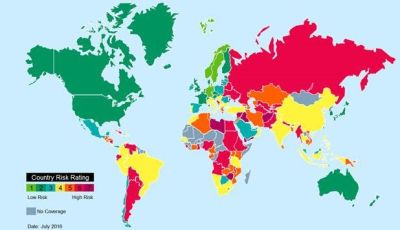
Global supply chain risk Q2 2016.
Global supply chain risk climbed in the second quarter of 2016, reaching the highest levels since records began in 1995, according to the CIPS Risk Index, powered by Dun & Bradstreet.
The Index, produced for the Chartered Institute of Procurement & Supply (CIPS) by Dun & Bradstreet economists, tracks the impact of economic and political developments on the stability of global supply chains. The UK’s risk rating was downgraded by Dun & Bradstreet as a result of the leave vote.
This continued the worsening trend in global risk, which has been following this trajectory since Q4 2015. Amid sluggish growth across developed and emerging market economies in Q2, the UK’s vote to leave the EU at the end of June marked an unprecedented event that is expected to have a reverberating effect on supply chains in the region, and also across the rest of the world.
Immediately after the result, a dramatic fall in the Pound Sterling led to soaring costs for businesses that relied on importing, prompting many to reconsider their sourcing strategies. In addition, early evidence of a drop in consumer spending and business investments in the weeks following the EU referendum result increased the risk of the UK economy falling into contraction in the third and fourth quarters.
A similar picture was seen across Western Europe, with early signs of a dip in consumer and business confidence raising concerns about a wider economic slowdown.
Brexit – consequences near and far
While the UK will still have access to the EU’s single market for at least another two years after it invokes Article 50, the medium-term outlook is less clear. If the UK and the EU are unable to find an agreement about post-Brexit market access, the effects on supply chains could be significant, potentially bringing big changes in trade and investment.
Director of the centre for Customised Executive Development at The Cranfield School of Management John Glen said: “The UK’s departure from the EU could lead to some of the most dramatic shifts and severe implications for global supply chains in the coming years. While the full impact of the leave vote is still unfolding, the confusion and uncertainty surrounding the current situation has already driven supply chain risk to a worryingly high level.”
At a global level, the Brexit vote underlines concerns about a wider shift towards protectionism in global trade policy. In France, the UK vote has given a boost to the Front National, which is campaigning for more economic protectionism; the party also wants to hold an EU membership referendum. A victory for Marine Le Pen, the party’s leader, in the parliamentary and presidential elections next year is an unlikely scenario, but if it happens, it could lead to another sharp rise in supply chain risk. In the US, the presidential election shows that a significant proportion of the population feel that global trade has not been in their interest.
Trump causing uncertainty in the US
While the US risk score remained stable in Q2, the outlook is uncertain. If Donald Trump wins, he is likely to seek to increase trade barriers with countries such as China and Mexico, two countries at the top of the global manufacturing food chain. This in turn will have a significant impact on global supply chain networks.
APAC stabilising
Meanwhile, concerns about a near-term collapse in China’s growth have subsided and the associated rise in commodity prices has taken some of the strain off Australia. The country’s risk rating, as a result, improved by one quartile in June 2016.